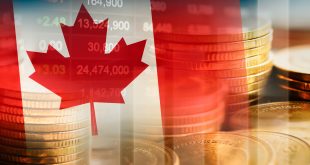Due to strong US economic data, the US Dollar increased throughout the week and was among the best performers. The dollar needs one more set of positive figures in order for the rise to continue. After Thursday’s surge in response to the release of US GDP statistics, the DXY recorded its second weekly gain and finished above 101.50. Although it has recovered from one-year lows, it is not yet technically out of the woods.
After a volatile Friday, USD/JPY finished the week modestly lower, near 141.00 and far from the bottom hit on Friday after the Bank of Japan’s surprise move. The market will look for clues about the next move and how close the central bank is to significantly changing its monetary policy stance. Any signs toward normalization could boost the Japanese Yen.
For the second week in a row, USD/CHF increased, extending the recovery from multi-year lows and ending just under 0.8700. On Thursday, Switzerland will publish its July Consumer Price Index, with a drop in the annual rate from 1.7% to 1.5% predicted.
AUD/USD fluctuated near 0.6600 and was unable to hold over 0.6800. They move sideways in tandem. On Tuesday, the Reserve Bank of Australia (RBA) will meet to discuss monetary policy. A rate increase of 25 basis points is anticipated.
The NZD/USD pair also trades aimlessly after failing to break above 0.6400. It got close to the 0.6100 support zone. The Q2 employment data from New Zealand, which includes the unemployment rate and the labour cost index, will be made public early on Wednesday.
USD/CAD increased little but is still constrained by 1.3250. The bias for the pair is still downward. Following an amazing 59,900 positive employment changes in June, Canada will announce its employment data on Friday.
US Treasury yields increased at the week’s close, helping the greenback. The 10-year bond rose to levels above 4.0% before declining, while the 2-year bond stabilised at 4.9%. Bond yields in the eurozone increased as well, albeit more gradually.
The EUR/USD fell for the second consecutive week, moving further away from one-year highs. It hit a low of 1.0940 before rising back over 1.1000. Although the overall trend is still upward, the Euro is losing steam. On Monday, Germany will release its retail sales data, and on Tuesday, its unemployment rate data.
After staging a brief pullback, GBP/USD ended the week unchanged, circling around 1.2850/60. The meeting of the Bank of England Monetary Policy Committee will be a significant event this week. On Thursday, the central bank is anticipated to announce a rate increase. Whether it will be 25 or 50 basis points is up for dispute. While wage growth and inflation point to the possibility of a 50-bps increase, the economic outlook and indications of a sluggish labour market point to a lesser increase.
Also Read
GBP/USD dropped on BoE’s policy decision speculations
USD/JPY volatile as investors digest PCE data, BOJ’s Decision
Oil surges for fifth week ahead of OPEC meeting
How Have Treasury Yields Reacted to BoJ’s Tweak?
USD/CAD lower as Canadian data fails to boost Canadian dollar
 Noor Trends News, Technical Analysis, Educational Tools and Recommendations
Noor Trends News, Technical Analysis, Educational Tools and Recommendations





